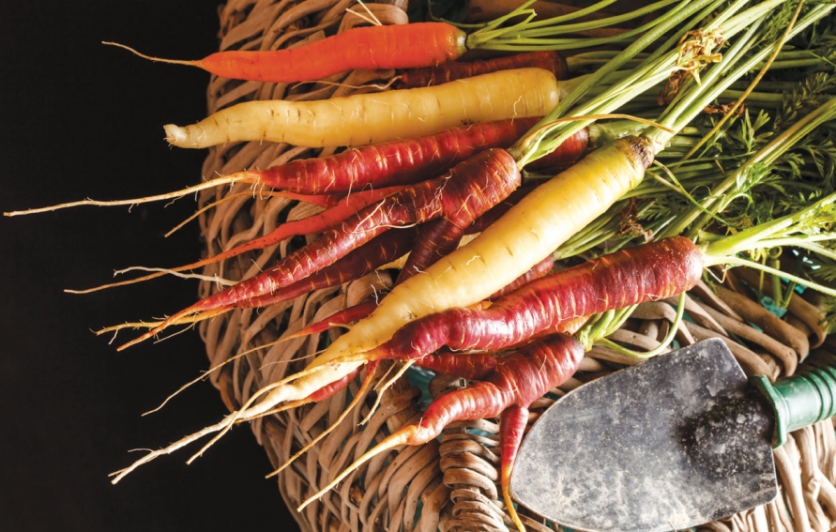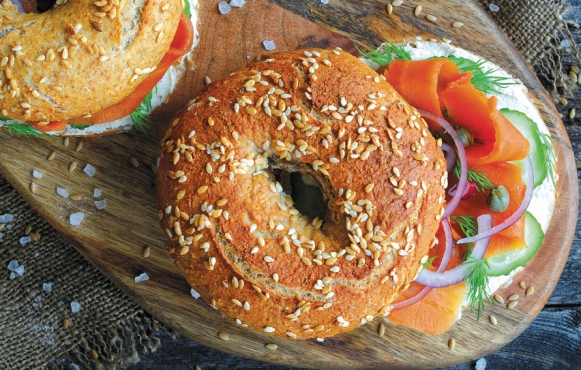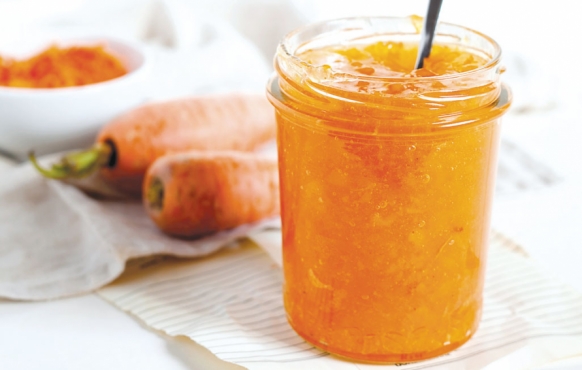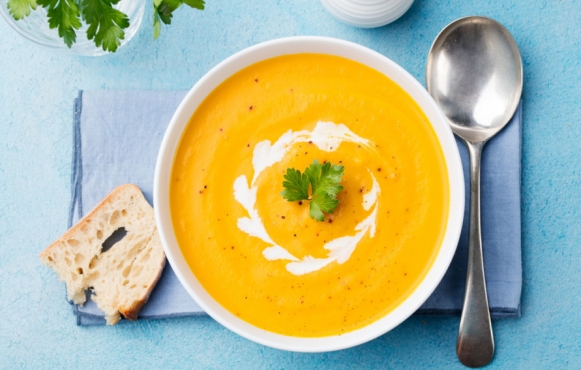24 Carrot Magic

You can store carrots all year long for a bit of sunshine in your winter dishes.
Few vegetables are as universally eaten by all ages and as versatile as the carrot. You can find it puréed for babies, in school snacks for school-aged kids and on crudité platters and glazed as side dishes for adults. Carrot shows up as cake, puddings, in stocks and soups, salads, braised with roasts and just about anywhere else you would like to add a bit of earthy sweetness.
While use of the carrot as a food source (originally for its seeds and leaves) began in Persia, domestication of the white or purple taproot in Asia Minor gave rise to a root that was sweeter, less woody and probably by accident, had mutated purple pigment loss, producing a carrot that became more yellowy orange and eventually all orange.
You can easily buy carrots today that range in colours from white, yellow, orange, red and purple with some varieties even being multi-coloured. They can grow as large as your forearm as storage carrots or can be the size of a quarter, like the thumbelina. Carrots in general, but especially the orange ones, are high in beta-carotene, which is (giving the carrot its colour) metabolized by the body into Vitamin A. The latter is great for eyesight and lends itself to the old adage that eating carrots helps you see in the dark, although it doesn’t. Eating a lot of carrots though can create an abundance of carotenoids in your system, turning your skin a yellow/orange colour.
The following recipes show only a fraction of the possibilities the carrot holds — from soothing soups and sweets (I mean, try to make a dessert with Brussels sprouts, no thanks) to a very passible replication of cured salmon. I know it’s easy to overlook the carrot, but let’s show it some appreciation and make it the star of your next meal.








